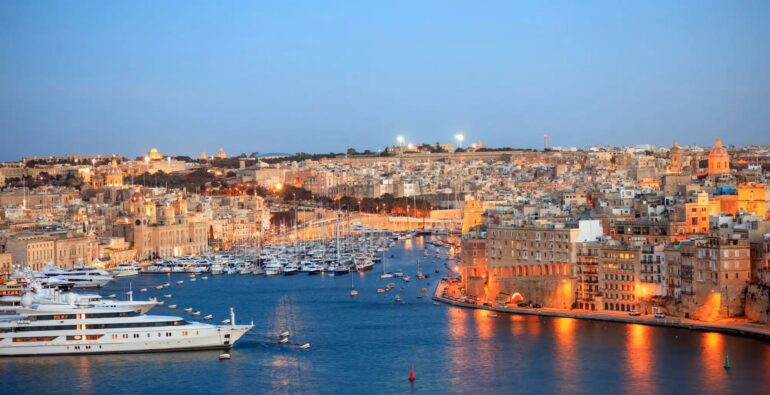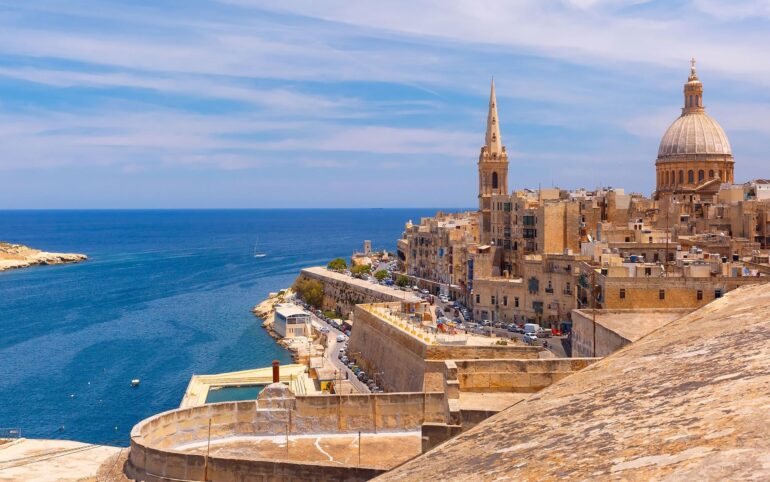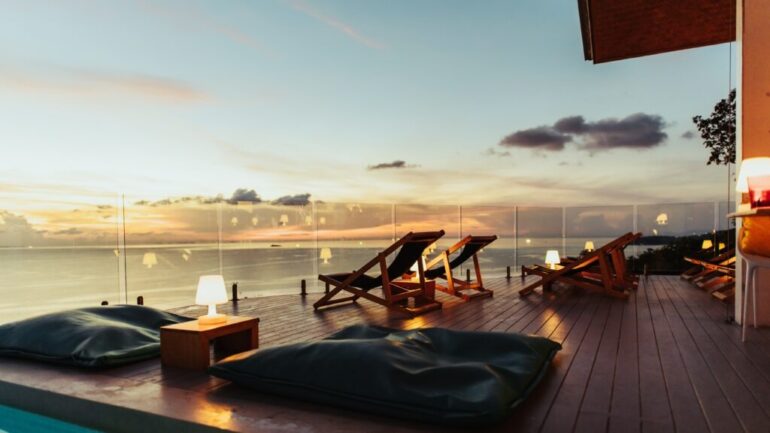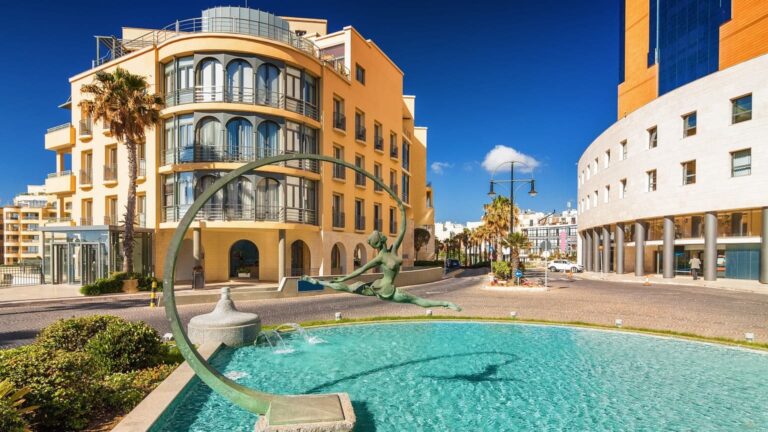Malta’s property market has caught international attention for its resilience, exclusivity, and strategic location in the Mediterranean. Investors from across Europe and beyond are eyeing Malta not just for its sunshine and stability—but for its increasingly refined luxury real estate segment.
For those looking to move capital into a safer, higher-yielding asset, luxury real estate in Malta presents serious potential. But timing, market signals, and buyer behavior trends matter more than ever.
Key Highlights
- Malta continues to show stable property appreciation despite global volatility.
- Luxury real estate demand is growing in areas like Sliema, St. Julian’s, and Valletta.
- Foreign investors are returning after post-pandemic slowdowns.
- Rental yields in the luxury segment remain strong and competitive.
- Tax incentives and residency programs fuel foreign interest.
- Smart buyers are choosing long-term capital gain over short-term speculation.
Malta’s Luxury Market: Real Demand or Hype?

The top end of Malta’s real estate market operates very differently from the general housing sector. Prices in prime locations have remained solid, even during periods where mid-tier and entry-level units saw cooling. This is largely due to foreign investment, low supply, and high lifestyle value.
High-end developments like Tigné Point and Portomaso Marina remain hot picks, not just for locals but for international buyers looking for second homes or income-producing assets.
Owners in these developments often report better insulation from price drops, better tenant quality, and faster resales.
If you’re searching for flats for rent in Malta, it becomes clear how strong the demand is. The luxury rental segment is particularly active around Sliema and St. Julian’s, driven by short-term expatriate contracts, embassies, and digital nomads.
Malta’s market is not inflated hype—it’s driven by low inventory, high rental demand, and long-term interest in island living with EU security.
Who’s Buying, and Why?
Buyers of luxury property in Malta typically fall into four groups:
- High-net-worth locals upgrading primary residences
- EU buyers seeking tax optimization and residency benefits
- Non-EU investors leveraging Malta’s passport and visa programs
- Portfolio diversifiers focusing on eurozone real estate assets
Many of them are not looking for a quick flip. They’re buying with a five-to-ten-year horizon in mind. That affects how the luxury segment behaves in downturns—it holds.
Government policies like the Individual Investor Programme (IIP) and the Permanent Residency Programme have kept demand consistent. Add to that the robust legal framework and a business-friendly tax regime, and Malta becomes a magnet for strategic investors.
What’s Driving Prices in Top Locations?

Location remains the most reliable indicator of price strength.
- Sliema commands the highest values due to seafront views, luxury amenities, and walkable access to nightlife, shopping, and marinas.
- St. Julian’s, especially Portomaso and Pender Gardens, attracts tech professionals and expats.
- Valletta, now a UNESCO gem turned luxury hub, draws cultural buyers and boutique developers.
- Madliena and High Ridge remain exclusive enclaves for villas and panoramic properties.
Developers are doubling down on quality. Smart home features, concierge services, underground parking, and LEED-certified construction are becoming standard in Malta’s high-end projects.
Is There Room to Grow in 2025?
Yes—but not everywhere. Malta’s size and limited land supply mean expansion will always be controlled. That favors long-term value.
Luxury real estate in Malta will never experience explosive booms like some emerging markets. Instead, it trends toward incremental appreciation with fewer speculative bubbles.
In 2024, the luxury segment saw an average price increase of 5.4%, compared to 2.1% for the overall market.
As inflation and interest rates stabilize across the eurozone, expect more liquidity to flow into safe, tangible assets—like Mediterranean property.
Malta’s regulatory environment is also under regular updates to prevent overheating, so market stability remains a priority.
How Does Malta Compare with Other Luxury Markets?
Here’s a snapshot comparison:
| Feature | Malta | Monaco | Dubai | Cyprus |
| EU Membership | ✅ Yes | ❌ No | ❌ No | ✅ Yes |
| Tax on Capital Gains | ❌ None (after 3 years) | ✅ Yes | ❌ None | ✅ Yes |
| Residency Incentives | ✅ Attractive | ❌ Limited | ✅ Strong | ✅ Available |
| Price per sqm (prime) | €6,000–€10,000 | €50,000+ | €7,000–€9,000 | €3,000–€5,000 |
| Liquidity/Resale Speed | ✅ Moderate | ✅ High | ✅ High | ❌ Slower |
Malta may not offer the flash of Dubai or the ultra-elite crowd of Monaco, but its mix of EU advantages, stable returns, and lower entry price makes it attractive for savvy investors.
Rental Returns: Still Worth It?
High-end rentals in Malta continue to perform well. While the short-let market has become more competitive due to licensing requirements, long-let properties in prime locations are in constant demand.
Typical annual gross yields for luxury apartments hover around 4.5% to 5.2%, with villas reaching up to 6% when well-located. That’s above average for most EU cities in the same price range.
Moreover, many landlords use corporate leases, reducing tenant risk and turnover.
Property management services are also widely available, making luxury property ownership relatively hassle-free, even for international buyers.
What Should Buyers Watch Out For?

While Malta’s luxury property market offers strong potential, it isn’t risk-free. Watch for:
- Overpriced units in rushed developments with poor finishing
- Lack of parking in central properties
- Misleading marketing on sea-view claims or future construction zones nearby
- Legal issues on title or airspace rights in older converted buildings
Always work with a licensed notary and request a full due diligence check, especially for properties in converted palazzos or historical zones.
Also, avoid informal agreements or skipping architectural inspections, even for new builds.
Future Outlook and Market Sentiment
Malta’s luxury property market shows no signs of slowing in 2025. While price growth is no longer exponential, it is steady and sustainable.
Smart money continues to flow into trophy properties in desirable postcodes, especially as global instability pushes investors toward assets with real-world value and legal protection.
New projects in St. George’s Bay and Manoel Island are likely to lift prices further, and limited land availability will keep demand high in central districts.
Developers are also increasingly incorporating ESG and green certification, which is now a deciding factor for younger, high-net-worth buyers.
Final Thoughts
Malta’s luxury real estate market is not a playground for speculators. It rewards patience, diligence, and a long-term mindset.
Investors who prioritize location, legal clarity, and quality construction will find Malta to be a stable and profitable destination. The island may be small, but the returns—financial and lifestyle—can be significant.
Buying into Malta’s luxury segment now, while international interest regains full momentum, could offer a rare window of opportunity before prices recalibrate upward again.
Would you rather watch others move in—or be holding the keys to your own Mediterranean asset?
Let me know if you’d like a version of this article in Serbian or need supporting visuals like a location comparison map.

